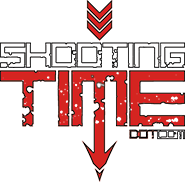GETTING STARTED
When I start getting ready for bare-shaft tuning I look at what arrow I’m going to use. I do research and look for arrows that have the least amount of variances. Hopefully someone has done this testing and has posted.
Once I decide on what brand then I look at static spine. This can be done with a program or a chart. A good chart is Easton 2014 bowhunting chart. Make sure you read the options to make sure your choosing correctly.
When looking at the static spine if you have any doubts on spine go with the next higher spine. If You can buy just two arrows this will helps in case the arrow you chose doesn’t work.
SETTING UP
At this point I set my bow to factory spec. This includes checking axial to axial. Set center shot. This is horizontal and vertical. I set my arrow through the center of the burger hole and at 90 degree to string for the starting point.
If you can adjust yokes I set mine at straight at full draw. Now this is how I set mine up. This may not always be the best starting point, but it’s a starting point.
There is three bare-shaft methods you can do.
• Point of impact with fletched
• Bare-shaft group
• Bare-shaft through paper
CORRECTIONS BEING MADE
When bare-shaft tuning your goal it to get the two nodes on the arrow to be leaving in line with each other. When tuning a bare-shaft we want to keep a bow as close to factory settings as possible. This is where the bows efficiency will be at best. Adjustments for off center left and right are made by moving rest left and right.
Adjusting yokes if applicable. Or moving spacers on cams if applicable. For adjustments for off center up and down are made with moving rest up and down. Moving the loop up or down or advancing or retarding a cam. Most people choose the top cam to make this adjustment with. Depending on what bow taking a cam out of
sync may not be the best. This will depend on feel. For my bow if cams are out of sync the wall is very soft.
POINT OF IMPACT
This method I like to use two to three fletched arrows and one bare-shaft. This method you start with the arrow set up at the length, tip weight you want to use. Set up your target and stand at 20 yards. Shoot the fletched arrows and then bare shaft. I would repeat this at least three times to verify consistency. Now depending on location of bare-shaft to fletched you need to make adjustments accordingly. When you reach the point the bare-shaft is grouped with the fletched arrows your good.
BARE-SHAFT GROUP
This method I like to use three bare-shafts. With this method you start at 20 yards. Now shoot two to three groups to verify consistency. Now depending on group size you need to make adjustments accordingly. When you reach a group that is sub two inch groups and it’s repeatable then at this point you can call good or you may want to step back to thirty yards and repeat process. Here you should have a a group of three inch or less.
BARE-SHAFT THROUGH PAPER
This method you take one bare-shaft and start around five yards. Shoot the bare-shaft at shoulder height through paper. Repeat several times for consistency. Make adjustments as needed. Once you have a bullet hole and it’s repeatable back up to ten yards and repeat. Continue this until you can reach 20 yards with a repeatable bullet hole.
There is also a pre method. Cut and trim. Cut and trim is to find the correct dynamic reaction for the arrow set up you have chosen. This method gets the arrows with the reaction that fits the bow and how you shoot. Once you have found this you then will start one of the three tuning methods from above.
I did not put this in the beginning due to most people will not spend the time to do this method. The cut and trim method is the best way I know of to make sure the arrow is correct with dynamic reaction. The good thing about compounds being shot with a release is spine is not overly critical. Having good flight and tune can be done without this method.
EWN
23 July 17
